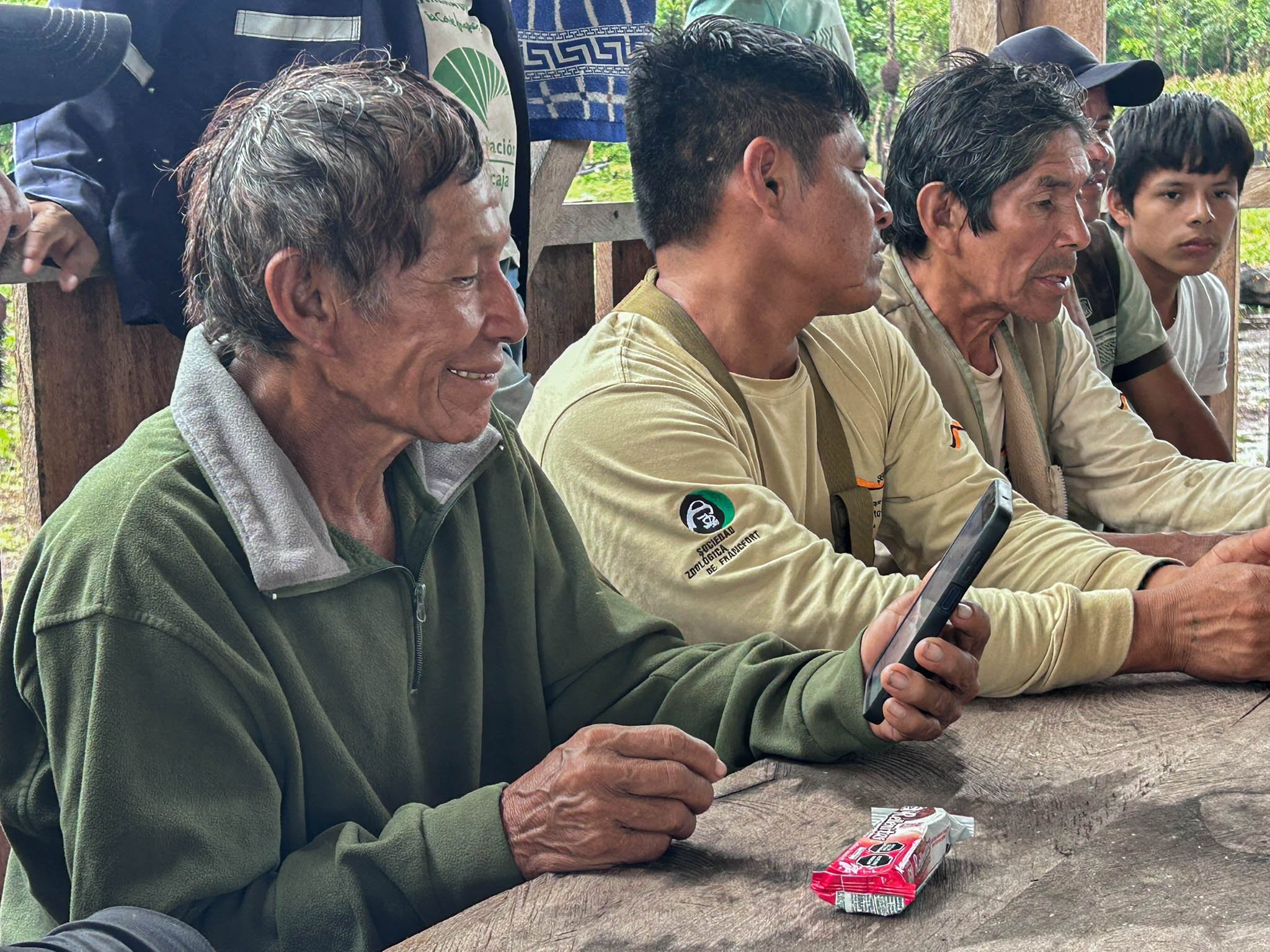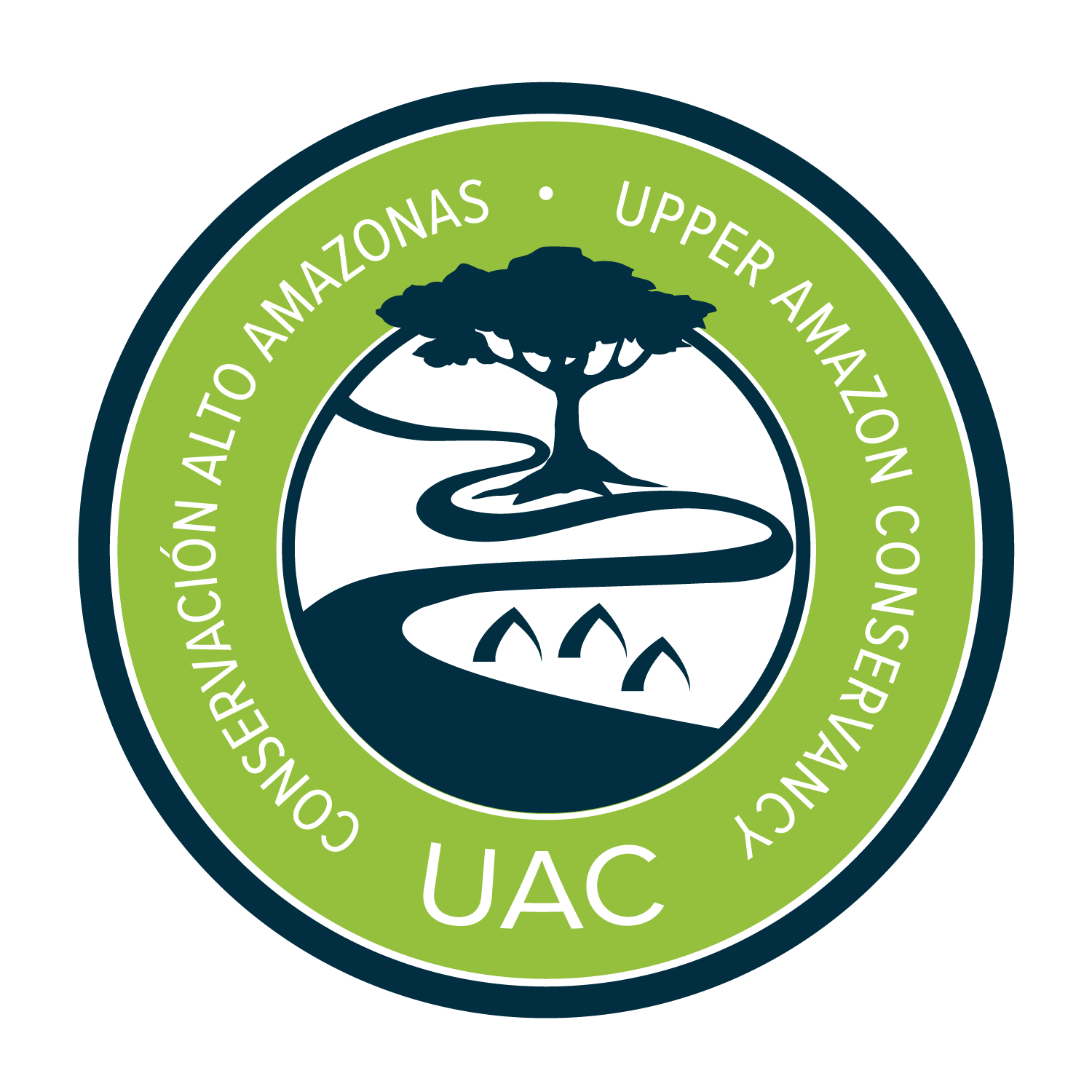Urgency to Conserve the Sepahua Headwaters: The Key Role of Community Surveillance
UAC, SERNANP, and community patrollers prepare to begin a surveillance mission on the Sepahua River.
The headwaters of the Sepahua River—an essential source of water and biodiversity in the Peruvian Amazon—are under mounting pressure from deforestation, oil-related land-use changes, and unregulated agricultural expansion, much of it related to coca farms to fuel the drug trade. Without consistent monitoring and protection, these threats could severely damage local ecosystems and endanger the rights and well-being of the Indigenous communities who call this region home.
In response to this urgent situation, in February the Sepahua Community Vigilance Committee (CVC) carried out a patrol. As part of this effort, 30 community patrollers received training in the use of SMART (Spatial Monitoring and Reporting Tool) technology, in collaboration with Peru’s national parks authority (SERNANP) and Upper Amazon Conservancy (UAC).
Deforestation documented during the community patrol along the Sepahua River, 2025.
The Need to Finance an Updated Environmental Assessment
Since 2019, UAC has documented a troubling increase in deforestation and mounting pressure on local ecosystems (Mongabay Latam). In 2022, additional monitoring revealed widespread, unregulated changes in land use. The unchecked expansion of agricultural plots has become a major driver of ecosystem degradation. Despite ongoing conservation efforts, deforestation has now reached the buffer zone of Alto Purús National Park, Peru’s largest park and home to the Mashco-Piro isolated tribe.
Aerial image of deforested zones in Sepahua, 2025.
Deforestation for agricultural cultivation continues to impact water resources and biodiversity. However, the lack of environmental complaints and weak enforcement have allowed these activities to persist without restriction. Currently, there is no recent data available to assess the scale of the environmental impact or to develop effective mitigation strategies.
To address this gap, the region urgently needs a new environmental assessment—one that requires funding for technical studies, field equipment, and training. Equally critical is the continued strengthening of local community monitoring committees to boost their independence and operational capacity.
Indigenous Leadership and Technology for Territorial Protection




Training by UAC and SERNANP on SMART mobile for local community vigilance committees.
Community surveillance efforts have been led by three community vigilance committees: Dos de Mayo and Santa Isabel, and the agricultural association ARDISEP, with the support of park rangers from the Alto Purús National Park from the SERNANP and the UAC team. During the most recent patrol, participants identified troubling signs of environmental degradation, including a decline in wildlife and alterations to the river’s course caused by illegal land invasions and changes in land use.
The use of SMART technology has been a key element in this process. “SMART Mobile helps us capture real, on-the-ground information,” explains Maricela Vargas, a member of the ARDISEP committee. “It allows us to understand the true state of our flora and fauna, as well as the human activities that are impacting our forests.”
The SMART training sessions, held on February 13 and 16 at the Alto Purús National Park substation in the Sepahua sector and at the community meeting space of the Santa Isabel Native Community, enabled 30 community patrollers to strengthen their skills in documenting environmental threats with greater accuracy and generating technical reports to support future conservation efforts.
"This tool gives us concrete evidence to demand the protection of our rivers and forests. We cannot allow this destruction to continue unchecked," emphasized Adolfo Ramírez, a member of the ARDISEP committee.
Pascual Miqueas Urquía, from the Dos de Mayo community committee, highlighted the importance of continuing to strengthen these initiatives: "We weren’t familiar with SMART technology, so I’m very grateful for the training. I hope it’s not the last—we need these to continue."
Toward Effective Protection of Sepahua: The Need for Institutional Support
Beyond surveillance patrols and technical training, communities are seeking official recognition of their territories and pushing for the creation of a protected area in the Sepahua headwaters. Achieving this goal requires building strategic alliances with key institutions such as the National Forest and Wildlife Service (SERFOR), the Environmental Prosecutor’s Office (FEMA), the National Police, the Navy, the Ministry of Culture, the National Water Authority (ANA), and the Regional Directorate of Agriculture of Ucayali (DRAU), among others.
The presence of Indigenous Peoples in Isolation and Initial Contact (PIACI) in the area underscores the critical need for effective protection. “Training in the use of SMART Mobile is essential for defending our territory and protecting Alto Purús National Park,” says Jorge Yumbo, a member of the Santa Isabel vigilance committee.
To make environmental monitoring truly effective, it is vital to ensure the full implementation of SMART technology — including mobile devices, internet access, and portable chargers. This will strengthen the presence and response capacity of both SERNANP and UAC in the face of growing environmental threats.
The communities and their allies are calling on authorities, organizations, and donors to join efforts in the following areas:
● Fund an updated environmental assessment to provide accurate, up-to-date data.
● Strengthen community-based monitoring through additional training, equipment, and institutional support.
● Implement concrete protection measures to stop the spread of deforestation and prevent river pollution.
Investing in the conservation of the Sepahua headwaters is not only about safeguarding biodiversity — it is about securing water access and sustaining the livelihoods of the communities who depend on these ecosystems.




